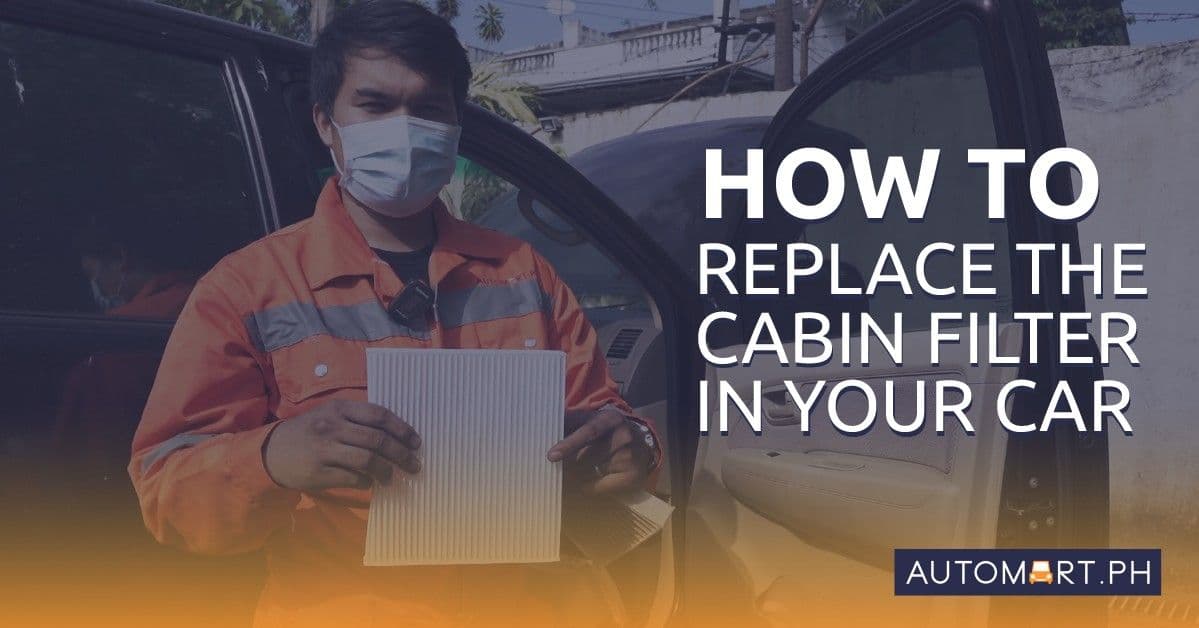
How to Replace the Cabin Filter in Your Car
Updated on December 18 2025
The air cabin filter is an essential part of your vehicle’s heating, cooling, and air-conditioning (HVAC) system. The cabin filter purifies the air inside your car by removing pollutants like dust, pollen, and other allergens from entering the cabin.
In this next installment of Automart’s Mekanik Ko DIY auto maintenance series, we’ll show you how to replace the cabin filter in a few easy steps.
3 Easy Steps to Replace the Cabin Filter
Difficulty Rating: Easy
Step 1: Remove the glove box.
In most vehicles, the cabin filter is behind the glove box. Park the car in a safe and level area, turn off the ignition, and apply the parking brake. Next, go to the front passenger seat and open the glove box. Remove all the contents of the glovebox before proceeding.

After removing all your stuff, open the glove box and remove it by pushing the top two edges towards the center. By doing so, you can loosen the tabs that hold the upper portion of the glove box.
Step 2: Remove the old cabin filter.
After removing the glove box, the cabin filter is hiding behind a small compartment. Open it by loosening the tab, remove the cover, and pull out the old cabin filter.

Most cabin filters are a pleated concoction of multifiber cotton or synthetic materials. Other cabin filters are washable. The fibers in the filter are responsible for trapping dust, dirt, and pollutants before the air enters the cabin. Do not be surprised if your old cabin filter is a dirty, blackened, gooey mess.
Step 3: Install the new cabin filter.
Take the new filter out of the box. You can spend anywhere from ₱200 to ₱800 for a new filter, although washable filters will cost more. All that is left to do is to carefully slide the new filter inside the compartment, replace the cover, and install the glove box.

Tip: Replace the cabin filter at least once a year or every 15,000 kilometers, whichever comes first. If you live in an urban area with higher air pollution incidences or suffer from allergies, consider replacing the cabin filter at least twice a year or every 8,000 kilometers for good measure.
Conclusion
Watch out for signs of a dirty or clogged air cabin filter like weak airflow (when the A/C is on), a whistling sound from the air ducts, unpleasant odors from the air vents, or unnecessary noises emanating from behind the glove compartment. If you notice one or all the above symptoms, replace the cabin filter immediately.